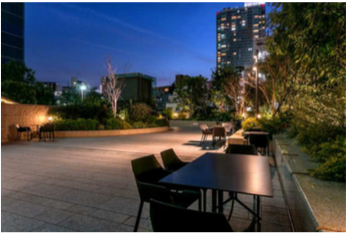China, stoneware, and pottery were unquestionably regions where the Arts and Crafts ways of thinking could prosper. Handcraftsmanship is critical to these exchanges, and trimming determined from nature was the most pined for on these pieces. Every individual piece delivered by each diverse studio and each expert was one of a kind. The most pursued coatings were matte coatings that had been created during the last piece of the nineteenth century. These coatings didn’t contain similar power to the great clean coatings, and in this manner, they delivered more regular tones of green and brown. 六本木 フレンチ ディナー shows how the dining rooms should be.

The plans of these ceramics depended on leaves and blossoms local to the grounds of the originators
Another structure that stoneware, china, and pottery of the Arts and Crafts Movement took on was that of the early Gothic. Adapted creatures regularly showed up on foundations covered with leaves or blossoms. These creature structures were regularly duplicated from Japanese prints of the early ages. These products were most of the time accessible in blue, green, and red. Even though stoneware, china, and pottery of the period observed the severe guidelines of the Expressions and Crafts convictions, this was the one region where there was somewhat more opportunity in the plan. The formation of these things was thought about pretty much “craftsmanship,” and fashioners took more opportunity in making their plans. In rooms, for example, the lounge area, earthenware, china, and ceramics were regularly the sole design utilized. The way that the planner was allowed to deliver useful articles that were permitted to be considered as workmanship forced fewer limitations on fashioners and permitted them to make all the more unreservedly. In any case, being the perfectionists that Arts and Specialties individuals were, they observed the severe guidelines on craftsmanship and plan quality. They utilized every regular material and avoided splendid tones not found in nature. The themes that they utilized could be found in the nature encompassing the architect, even though they were regularly adapted renditions of these normal miracles.
Dishes involved
Dishes, similar to any remaining parts of the Arts and Crafts Movement, were made to kill the over-ornamentation of the former time frame. Glass of the Victorian time had been so adapted and enriching that it verged on being difficult to utilize. Fashioners of the Arts and Artworks period worked industriously to make china that had straightforward, clean lines and that was useful for ordinary use. The splendid tints from the Victorian period offered an approach to drab glass or then again glass that was hued in extremely unobtrusive tints of green or golden tones. Like some other parts of the Arts and Crafts Movement china was consistently hand blown. This made each piece from each planner interesting to some others. Any enhancement that showed up on the dish sets of the period was normally found on the stems of glasses and flagons. This adornment was quite often as round states of various sizes. The stem was likewise where the tone was applied with the end goal of embellishment. Since shading could be applied to the stem without compromising the trustworthiness of the actual glass, the planner could accomplish an individual and imaginative search for his creation without forfeiting the standards of the style he was attempting to accomplish.

